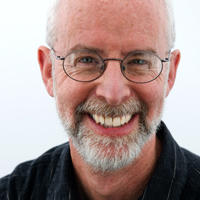
gstark@wellesley.edu
(781) 283-3108
Physics & Astronomy
B.S., Massachusetts Institute of Technology; M.A., Ph.D., University of California (Berkeley)
Science Center E434
Glenn Stark
Professor of PhysicsMolecular spectroscopist, focused on systems in atmospheric and astrophysical research.
Broadly, spectroscopy is the study of the interactions between radiation and atoms and molecules; it includes the measurement and interpretation of the frequencies of light emitted and absorbed by these species. Patterns in observed spectra are analyzed to yield insights into the underlying behavior of the electrons and nuclei that make up the systems. I concentrate on the spectra of the simplest and most fundamental molecules─diatomics (molecules consisting of two atoms). I specialize in “vacuum ultraviolet” and “extreme ultraviolet” molecular spectroscopy; these terms refer to the wavelength regions of the light used: 100 to 200 nanometers (nm) and 50 to 100 nm, respectively. My laboratory work is in support of atmospheric and astrophysical research. Most recently I have studied the absorption spectra of molecular nitrogen, molecular oxygen, sulfur dioxide, carbon dioxide, and carbon monoxide. I have a growing interest in the applications of isotopic effects in these molecules.
I enjoy teaching a full range of courses in the Physics Department. In addition to courses within our standard curriculum, I recently developed, and have been teaching, Einstein’s Century: The Physics of the Last 100 Years. This course, aimed primarily at students not majoring in the sciences, presents the fundamental ideas of relativity and quantum mechanics. While principally emphasizing the physics itself, this course also introduces students to the political and cultural circumstances that influenced the physicists of the 20th century. I supervise student research projects in my field of laboratory spectroscopy, and I have collaborated with Professor Robbie Berg and Tom Bauer of the Physics Department to develop a laser cooling and trapping apparatus. This student-focused project cools a gas of rubidium atoms to a temperature of only a fraction of a degree above absolute zero.
I currently receive research funding from three programs at NASA: Planetary Atmospheres, Origins of Solar Systems, and Astrobiology and Exobiology. Because my measurements require specialized light sources and spectroscopic equipment, my measurement programs are largely carried out off-campus at national and international facilities. I have active collaborations at Imperial College, London, and at the SOLEIL synchrotron facility in St. Aubin, France.
I once saw, from the smoky balcony seats of the old Boston Garden, Earl Monroe and Walt Frazier slice apart the Celtic defenses, and that was a treat. I wish that I could dance. I can ride a bike, sometimes with no hands. I own a small part of a house with my wife, Liz, and I'm learning about gutters. I prefer Harvey's Hardware to Home Depot.
